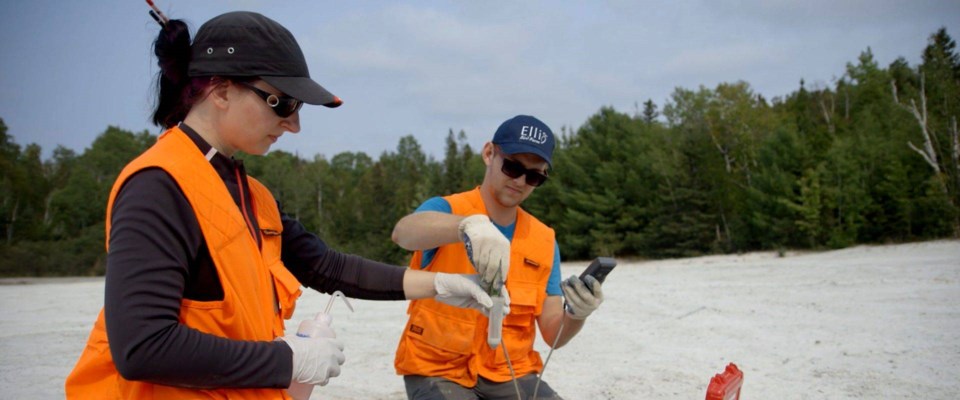A new and environmentally benign form of Sudbury’s mining industry just took a great leap forward with a more than $1.6 million contribution from international nickel miner Vale and the Ontario government.
Mining Innovation, Rehabilitation, and Applied Research Corporation (MIRARCO) at Laurentian University and its research leader Dr. Nadia Mykytczuk are the recipients of this largess that will be earmarked for the organization’s bio-mining and remediation efforts in tackling mine waste.
Sudbury nickel miner Vale delivered a $875,000 jump-start over five years toward MIRARCO’s research efforts to recover minerals from mine waste while cleaning up tailings sites through biotechnology. The Ontario government tacked on an additional $750,000 to this endeavour through the Northern Ontario Heritage Fund.
The announcement was made at the PDAC mining convention in Toronto, March 7.
The money is specifically earmarked to create an industrial research chair program, headed by Mykytczuk who is leading efforts to start a commercial-scale pilot plant using bioleaching and bioremediation processes to recover nickel and cobalt from low-grade pyrrhotite tailings and other wastes.
In Sudbury, it’s believed there is an estimated $100-billion worth of nickel, cobalt and other valuable minerals buried beneath millions of tonnes of rock at tailings sites, held by the city’s two largest mining companies.
But it made no economic sense for the companies to reprocess these massive volumes of rock through conventional milling to squeeze out the remaining low-grade minerals.
Through microbiology techniques, those metals could be extracted using native, naturally occurring bacteria found in the waste pile and run through a special bio-leach process.
Using nature’s version of Scrubbling Bubbles, Mykytczuk and her graduate students have been fine-tuning their technique of collecting micro-organisms at waste storage sites and training these microscopic bugs in a lab setting to eat through sulphur and iron in rock to release valuable minerals in a controlled setting.
At the same time, these organisms clean up toxic chemicals during the process – like sulphides which produce acid mine drainage – and separates them out into solution as benign waste.
Mykytczuk will likely use this support to launch the pilot plant in Sudbury. Ultimately, she wants to establish a Centre for Mine Waste Biotechnology, an innovation space to test-drive various forms of this biotechnology and help fast-track it to commercialization.
“This funding and collaboration will accelerate the development of new tools to help us extract value from wastes, producing the metals we need in an environmentally sustainable way,” said Mykytczuk in a statement.
Luke Mahony, the chief technical officer for Vale Energy Transition Metals, views the funding as a “triple win” to reduce the company’s environmental liabilities and speed up the process of capturing more mineral value from its mined material.
Northern Development Minister Greg Rickford, the chair of NOHFC, said the province is supportive of “Made-in-Ontario solutions that will reduce mine waste and enhance mine waste and enhance value for materials already involved in the mining process.”
Vale also announced a partnership with the University of Toronto, allotting $1.6 million over three years for sponsored research projects, training and professional development and “community engagement mechanisms.”
It’s geared toward Vale’s focus with “sustainable mining solutions,” especially carbon-free sources of energy and the supply of critical minerals such as nickel and cobalt.
An initial project will focus on improving commercial recovery of low-grade nickel-containing ultramafic ores at Vale’s Thompson operations in northern Manitoba.




